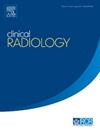T1 mapping of the sagittal images of the cervical cord: a potential biomarker to predict the severity of cervical spondylotic myelopathy
IF 2.1
3区 医学
Q2 RADIOLOGY, NUCLEAR MEDICINE & MEDICAL IMAGING
引用次数: 0
Abstract
Aims
To investigate the applied value of quantitative assessment of the cervical spondylotic myelopathy (CSM) severity using T1 mapping of cervical spinal cord.
Materials and Methods
A total of 133 patients with CSM (CSM group) and 30 healthy volunteers (control group) were prospectively recruited between September 2023 and March 2024. Patients with CSM were categorized into a mild group (mJOA ≥12) and a severe group (mJOA <12) according to the modified Japanese Orthopedic Association scores (mJOA). Cervical axial and sagittal T2WI, as well as sagittal T1 mapping were performed on all subjects. In the control group, native T1 was measured at each disc level (C2–C7); in the CSM group, native T1 was measured at the stenotic location, the disc level above and below the stenotic location (T1stenosis,T1above and T1below). Interobserver agreement, univariate analyses, pearson's correlations, and ROC curves were performed.
Results
Native T1 showed excellent interobserver agreement in the control group. The mean T1 value of the control group (772.94 ± 57.87 ms) was significantly lower than the T1stenosis(908.89 ± 135.61ms),T1above (844.66 ± 126.97ms) and T1 below (855.99 ± 125.52ms).The distribution of mJOA, T2(+), T1 stenosis, T1above and T1below between the mild and severe groups differed (P<0.05). All native T1 of CSM group showed negative correlations with mJOA. AUCs of T1 stenosis,T1above and T1below identified the severity of CSM patients as 0.857, 0.711, and 0.733, respectively.
Conclusions
T1 mapping can quantitatively assess the severity of CSM patients, and native T1 of spinal cord at the stenosis level is a valuable parameter to differentiate between patients with mild and severe CSM.
颈髓矢状图像的T1映射:预测脊髓型颈椎病严重程度的潜在生物标志物
目的探讨颈脊髓T1图定量评价脊髓型颈椎病(CSM)严重程度的应用价值。材料与方法于2023年9月至2024年3月前瞻性招募133例CSM患者(CSM组)和30名健康志愿者(对照组)。根据修正的日本骨科协会评分(mJOA)将CSM患者分为轻度组(mJOA≥12)和重度组(mJOA <12)。对所有受试者进行颈椎轴位和矢状位T2WI以及矢状位T1定位。对照组在各椎间盘水平(C2-C7)测量天然T1;CSM组在狭窄位置、狭窄位置上方和下方的椎间盘水平(T1狭窄、T1上方和T1下方)测量天然T1。进行了观察者间一致性、单变量分析、pearson相关和ROC曲线分析。结果T1在对照组中表现出良好的观察者间一致性。对照组T1平均值(772.94±57.87 ms)明显低于T1狭窄组(908.89±135.61ms)、T1狭窄组(844.66±126.97ms)和T1狭窄组(855.99±125.52ms)。轻度组与重度组mJOA、T2(+)、T1狭窄、T1以上、T1以下分布差异有统计学意义(p < 0.05)。CSM组原生T1与mJOA呈负相关。T1狭窄、T1以上和T1以下的auc分别为0.857、0.711和0.733,判断CSM患者的严重程度。结论st1图谱可以定量评估CSM患者的严重程度,狭窄水平脊髓原生T1是区分轻、重度CSM患者的重要参数。
本文章由计算机程序翻译,如有差异,请以英文原文为准。
求助全文
约1分钟内获得全文
求助全文
来源期刊

Clinical radiology
医学-核医学
CiteScore
4.70
自引率
3.80%
发文量
528
审稿时长
76 days
期刊介绍:
Clinical Radiology is published by Elsevier on behalf of The Royal College of Radiologists. Clinical Radiology is an International Journal bringing you original research, editorials and review articles on all aspects of diagnostic imaging, including:
• Computed tomography
• Magnetic resonance imaging
• Ultrasonography
• Digital radiology
• Interventional radiology
• Radiography
• Nuclear medicine
Papers on radiological protection, quality assurance, audit in radiology and matters relating to radiological training and education are also included. In addition, each issue contains correspondence, book reviews and notices of forthcoming events.
 求助内容:
求助内容: 应助结果提醒方式:
应助结果提醒方式:


